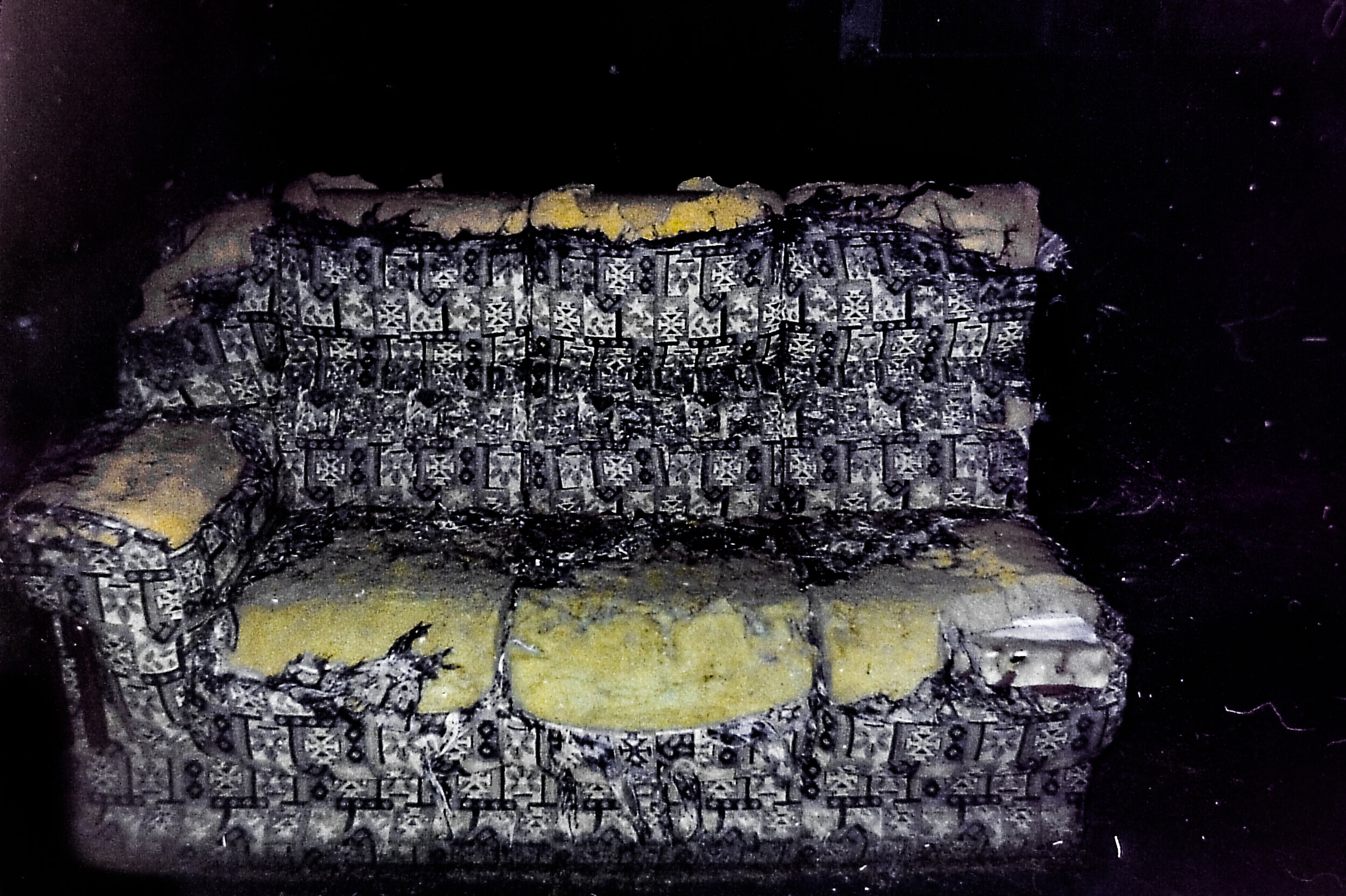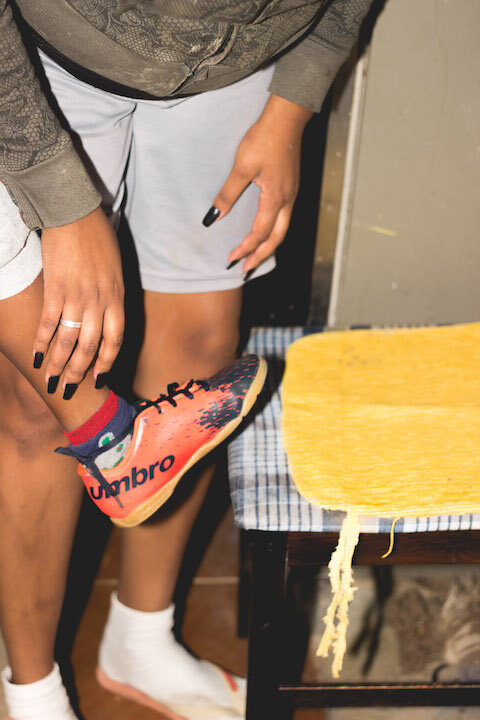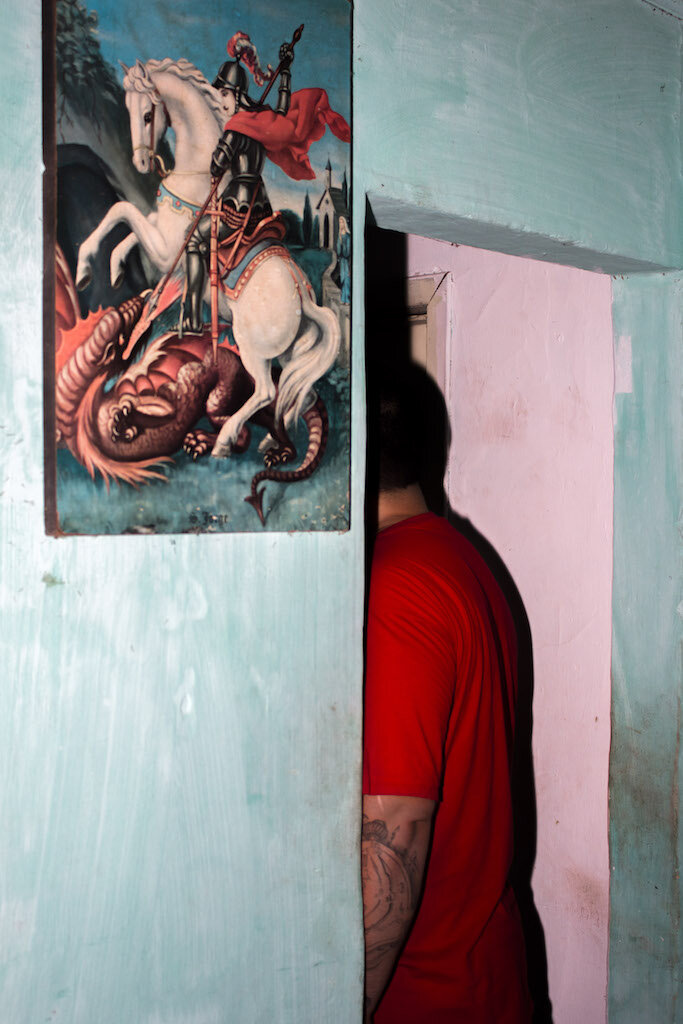ERICK PERES
All Rights Reserved ©Erick Peres
Erick Peres (Porto Alegre, RS, Brazil, 1994), visual artist / photographer. He began his artistic process in 2015. In his research he uses author's images, archives, interventions in images and texts. Through the emotional landscape of his neighborhood and popular culture, he travels between memory and the present, filling the gaps of failed memory with chronicles of self-fiction. He organizes the mismatch around him: twisted romances, abrupt endings, and the mutilated genealogy which voids are reconstructed by the hands of those who stand at the center of the margins.
Crying may last one night, but joy will come in the morning
How this concern to reconstruct your family's past was born and why turn it into a photo project?
EP: My research began when I realized--looking at a family album--that my father appeared in the first photographs, but at the end of this album, he was no longer there. Almost as if the image of him is fading as the photographs pass, disappearing. So I went to find out and understand the identity of my father. Trying to understand who he was. At first, I did this project just for myself, to be able to understand these gaps in my family's past, but over time I realized that this is a story that repeats itself in many places similar to my neighborhood.
Then, I saw the importance of sharing this with more people and places, because by sharing a personal topic I was able to create identification with people of similar reality. So I began to recreate and organize events and moments, mixing photos that I produced and archive images, mixing past and present.
“I saw the importance of sharing this with more people and places, because by sharing a personal topic I was able to create identification with people of similar reality”
In the images that you present of your childhood, without any doubt, provocation is recognized -- a search for artistic sensitivity to recognize characters from your family. Was this starting point for your vision as a photographer and visual artist?
EP: Of course. Normally we fill the empty spaces of memory with fiction, memory constantly betrays us. Many times it is contaminated by confused feelings, and photography as a tool that we use to express ourselves ends up working as a creator of fiction, since the truth becomes different for each one, according to the perspective, reality, and the look of each person in a situation. For these reasons, the images of my childhood acquire other meanings when seen as an adult. Images that at that time someone of the family produced, possibly thinking of recording a happy moment for posterity, today, report marks of absence, in gestures, smiles, which take on new meanings when they start from a painful look.
“Normally we fill the empty spaces of memory with fiction, memory constantly betrays us. Many times it is contaminated by confused feelings”
Is the reconstruction of family abandonment a constant theme in your work?
EP: This is a concern that appears repeatedly in the daily life of my neighborhood and the lives of similar people. By telling this story, I was telling not only my story, but that of many people who come from similar places. Families are marked by absences, male abortions, or abrupt cuts in their lives. Today I have produced a new work, where I seek to look at my friends who are now mothers and fathers and try to build their families with more affection and care, taking care not to repeat the same mistakes made in us. Looking at subjects like these made me think about masculinity and recognize various mistakes in myself. When we look for complex problems within ourselves, we can face a mirror.
“Looking at subjects like these made me think about masculinity and recognize various mistakes in myself. When we look for complex problems within ourselves, we can face a mirror”
What meaning do your father's letters hold?
EP: During the process of creating the work, I came across two letters, a letter that my father wrote to my mother and a letter that my mother wrote to herself. In my father's letter, he talks about the need to meet a person that he didn't know yet (because he sent him this letter without knowing her personally), somehow this letter seemed like something that I could have written to him. My mother, on the other hand, wrote a letter to herself, in an attempt to motivate herself when my father abandoned her. Putting together both letters created a sort of conversation between them, which never existed.
We noticed a constant in your project --as is the case with flowers and night. What meaning do these elements have in your images? Are they some kind of night owl pilgrimage?
EP: The flowers’ images are photos I took as a child, I think when I was 6 or 7 years old. Searching for archives, I found a photo album with just photographs of flowers. Later I discovered that they were photos I took during my childhood. I see the images of flowers as a playful representation of reality, perhaps a method during my childhood of seeing the complicated relationship between my parents, the violence present in my neighborhood at night, among other things. In a way, they symbolize a child's vision of these situations.
“I see the images of flowers as a playful representation of reality, perhaps a method during my childhood of seeing the complicated relationship between my parents, the violence present in my neighborhood at night”
You mention that your history with family abandonment is undoubtedly repeated in other lives in your neighborhood. Do you think that your work is a kind of community reconstruction, that’s social?
EP: I think it’s a reflection of the reality in which I grew up. Although it is a personal project, it becomes a community and social when it reaches other people who have a similar reality. Promoting discussions like male abortion, masculinity, I see the importance of looking to the past to understand the present. In a way, organizing these memories into a series of photographs was like taking a walk in my neighborhood at night, telling the story of anyone who lives here.
Although your mother appears in certain images, the rest of the characters appear as unknown beings erased by time. Are the interventions that you have done or is it a consequence of deterioration?
EP: Some images were already deteriorated by time, in others, they are interventions where I created marks on the images. Symbolically, the figure of my father faded over time and the only person who remained there the entire time was the image of my mother at dawn.
Tell us more about your authorial work in this project and your methodology, how do you integrate or appropriate images from the family album to put together your body of work?
EP: I began to photograph my concerns, night scenes, and places that ironically reminded me of my childhood and how little I knew about my father.
“organizing these memories into a series of photographs was like taking a walk in my neighborhood at night, telling the story of anyone who lives here”
So I began to build interspersed, mixing past and present between the photographs I produced at night and the images from my family album.
Do you have a reference for this project? What are your sources of inspiration?
EP: For a long time, I had few references within photography. My references have always been to the people who stayed and were present in my life, the conversations and the daily life of the neighborhood, the romances narratives in page song lyrics, among other things. I think that my greatest references come from this place, where, however simple it may be, I find very rich stories that help me in the construction of this universe.
All Rights Reserved ©Erick Peres





























